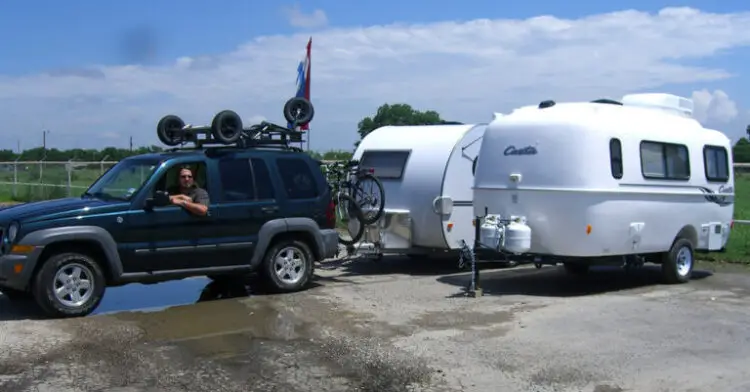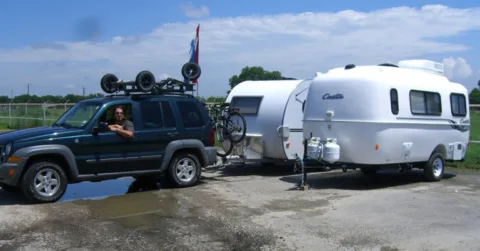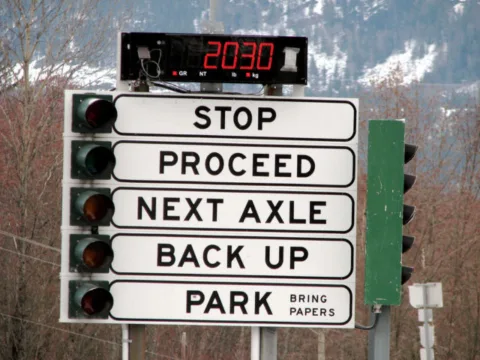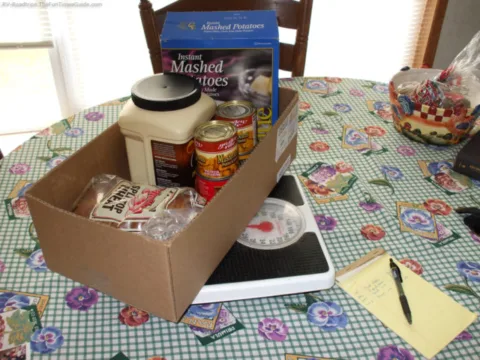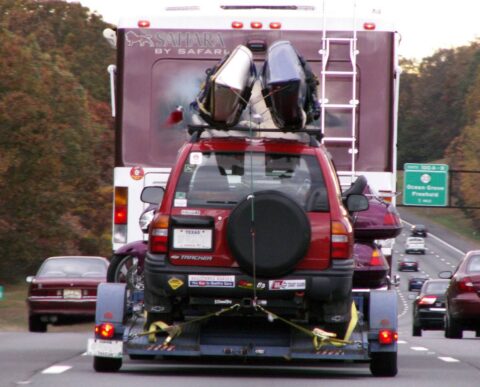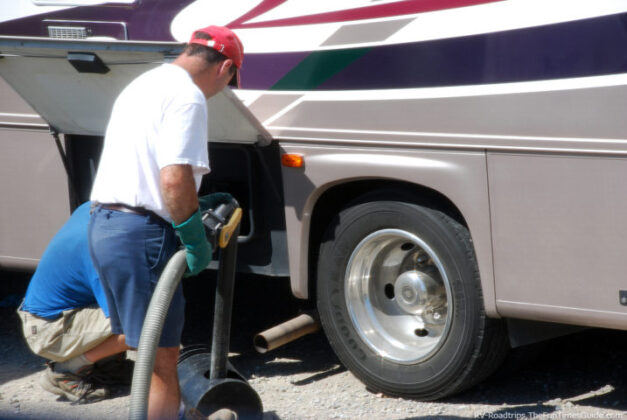For my wife and I, our entry into full time RVing was an eye-opening lesson in weight reduction.
Just as you need to know your RV’s height limitations and your RV’s width limitations, you also need to know your RV’s weight limitations (more on that in a minute).
For us, the concept of minimizing our belongings took a number of years to get settled into our heads. We thought there were certain items that we couldn’t possibly live without — which led us to hold onto way too much STUFF. Don’t let the same thing happen to you!
Here’s what you need to know about RV weight issues…
How Much Weight Can Your RV Legally Carry?
Many RVs today are engineered right down to the fine line.
With RV gross vehicle weight ratings (GVW is the total weight of the RV and everything in it) so close to the empty weight, loading much more than a few changes of clothes and the family dog is enough to set your RV over the factory-recommended weight!
RV weight is even more critical with RV travel trailers — because weight loaded toward the rear can dramatically affect handling characteristics.
There are many weight-related figures posted on your RV’s identification tag. This list of RV weight definitions will help you understand what each of them actually means.
Things That Affect RV Weight
When you’re calculating your RV’s weight allotment, don’t forget the weight of the water in the tanks — both clean water and wastewater.
Water weighs over 8 pounds per gallon. Most smaller RVs have at least 35-gallon tanks, 3 of them. That adds up to the better part of 1,000 pounds in water alone on board! That weight isn’t included in the manufacturer’s empty weight figure.
Many RVs come from the factory with a location to place a TV or DVD — but usually none are provided. Therefore, such items must be added to your RV’s total weight.
And if you had an air conditioner installed before delivery, that too is now added weight.
Once you install enough kitchen-related eating and cooking utensils along with sheets, pillows, and basic bedroom items, you might be very surprised at how quickly your RV has approached the GVW rating. Those kitchen and bedding items really add up!
By the time you’ve placed just the minimum number of outdoor items — like lawn chairs, portable grill, and a bag of charcoal into the outside storage compartments of the RV — you’re probably real close to maximum weight load.
For the new full time RVer, this is going to be a hard realization. Take it from me, it’s time to let go of all the STUFF that a house-bound life generates.
Must read: Weights And Balances For RVers
How To Determine Your RV’s True Empty Weight
To get an accurate picture of where you stand in the weight department before you start loading in personal possessions, fill all of your RV’s water and waste tanks with water. Fill the propane tanks as well.
Now, take your RV down to the nearest truck scale and have it weighed. This figure should be considered your “true” empty weight.
The total amount you can safely put in or on your RV from this point is the difference between this figure and the factory-rated Gross Vehicle Weight (GVW) that is posted on the tag at the front of your trailer or in the cab of your motorhome.
Don’t go down the highway and pull into the Department of Transportation’s weigh station looking to find out your vehicle’s weight. First of all, you’re not a commercial vehicle and have no business in there at all. Secondly, if you’re overweight, you’ll get a ticket and be forced to park right there until you come up with a way to get your RV weight down to legal limits. This could mean abandoning your personal possessions right there on the spot.
How To Determine Your RV’s Weight When Full
Your next step, if you are dealing with a motorhome, is to deduct the weight of all possible passengers. — both people and pets.
As you load belongings into your RV, fill cardboard boxes and then weigh them on your bathroom scale before you take them onto the RV. That way, you’ll have an idea of how much weight your adding with each item.
Keep a running tally, and you should be reasonably close to what your RV’s gross weight has now become.
After the RV is all loaded, go back to the truck scale and see what your RV weight is now. If you still have a nice cushion of weight capacity, then you’re good to go!
Always Keep An Eye On Your RV Weight
Don’t forget to think ahead.
As a full time RVer, you’ll be tempted to add small items to your decor to make your environment more personal. You’ll want to buy souvenirs as you go from place to place. And you’ll probably buy handy storage organizers and such. If you’re not careful, before you know it, you’ll be back into that STUFF rut — only this time, you may not have the weight capacity to allow it!
Downsizing to the bare essentials is an ongoing struggle when you’re a full time RVer.
After some time, it will become a habit. Eventually, it will become a lifestyle that you can embrace and appreciate. Be patient, it’s going to take time. Once you get there you’ll feel a sense of freedom — freedom from STUFF!
I’ve been involved in RVing for over 50 years — including camping, building, repairing, and even selling RVs and motorhomes. I’ve owned, used, and repaired almost every class and style of RV ever made. I do all of my own repair work. My other interests include cooking, living with an aging dog, and dealing with diabetic issues. If you can combine a grease monkey with a computer geek, throw in a touch of information nut and organization freak, combined with a little bit of storyteller… you’ve got a good idea of who I am. To date, I’ve shared my RV knowledge in over 300 articles here at The Fun Times Guide! Many of them have over 25K shares.
